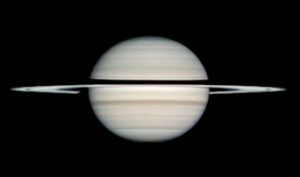Special to CosmicTribune.com, June 9, 2024
Excerpts from weekly Sky&Telescope report.
SUNDAY, JUNE 9
■ The Big Dipper has now swung around to hang down by its handle high in the northwest after dark. The middle star of its handle is Mizar, with tiny little Alcor right next to it. On which side of Mizar should you look for Alcor? As always, on the side toward Vega! Which is now the brightest star shining in the east.
■ When Vega shines well up in the east as it does now, Arcturus is the brightest star higher toward the south, neatly overhead. Draw a line from Arcturus to Vega. A third of the way along the line is dim Corona Borealis, the semicircular Northern Crown, as shown here:

The line from Arcturus to Vega crosses Corona Borealis and the Keystone of Hercules. The view here is oriented as at appears (much larger!) if you face southeast after dark.
Corona’s one moderately bright star is Alpha Cor Bor, a.k.a. Gemma or Alphecca, magnitude 2.2. But sometime within the next year or so, astronomers expect there may suddenly be two! Because T Coronae Borealis, a famous recurrent nova, shows signs (a gradual dimming) of being about to blow again for its first time since 1946. If it does, if could match the brightness of Alphecca.
But no guarantees an eruption will happen anytime soon. It didn’t in 2016.
MONDAY, JUNE 10
■ The Big Dipper hangs high in the northwest as the stars come out. The Dipper’s Pointers, currently its bottom two stars, point lower right toward Polaris. Above Polaris, and looking very similar to it, is Kochab, the lip of the Little Dipper’s bowl, the rest of which is very dim.
■ After nightfall is complete, Vega is the brightest star very high in the east. Barely lower left of it is 4th-magnitude Epsilon Lyrae, the Double-Double. Epsilon forms one corner of a roughly equilateral triangle with Vega and Zeta Lyrae. The triangle is less than 2° on a side, hardly the width of your thumb at arm’s length.

Binoculars easily resolve Epsilon. And a 4-inch telescope at 100× or more should resolve each of Epsilon’s wide components into a tight pair.
Zeta Lyrae is also a double star for binoculars; much tougher, but plainly resolved in a telescope.
Delta Lyrae, below Zeta, is a much wider and easier pair, reddish orange and pale blue.
TUESDAY, JUNE 11
■ After dusk, look for Regulus a few degrees lower left of the thick waxing crescent Moon. Algieba, Gamma Leonis, is about twice as far above the Moon (for North America). It’s a fine telescopic double star, magnitudes 2.4 and 3.6, separation 4.7 arcseconds.
WEDNESDAY, JUNE 12
■ Bright Arcturus, magnitude 0, shines pale yellow-orange high overhead toward the south these evenings.
THURSDAY, JUNE 13
■ First-quarter Moon (exactly first-quarter at 1:18 a.m. tonight EDT).
FRIDAY, JUNE 14
■ As we count down the last six days to official summer (the solstice comes on June 20th), the Summer Triangle finally stands high and proud in the east after dark. Its top star is bright Vega. Deneb is the brightest star to Vega’s lower left, by 2 or 3 fists at arm’s length. Look for Altair farther to Vega’s lower right. Altair is midway in brightness between Vega and Deneb.
SATURDAY, JUNE 15
■ As the stars come out in North America, the Moon shines nearly midway between Spica to its lower left and fainter Gamma Virginis (Porrima) to its upper right; see below. Gamma Vir is a lovely, equal-brightness double star for telescopes, separation 3.4 arcseconds this year; it’s slowly widening. The pair is oriented almost north-south.

SUNDAY, JUNE 16
■ In twilight as summer nears, look very low in the north-northwest for wintry Capella very out of season. The farther north you are, the less low it will appear. You may need binoculars. But if you’re as far north as Montreal or either of the Portlands (Oregon or Maine), Capella is actually circumpolar.
PLANET ROUNDUP
Mars and Saturn are in nice view just as dawn begins. The highest and easiest is Saturn, in the southeast. It’s magnitude 1.2, fairly modest, but there’s nothing else that bright anywhere near it. Its background is dim Aquarius.
Christopher Go, in the low-latitude Philippines, took this image shortly before sunrise on June 1st.The rings will turn exactly edge-on March 23, 2025 — when Saturn will unfortunately be too close to the Sun to observe.

You must be logged in to post a comment Login